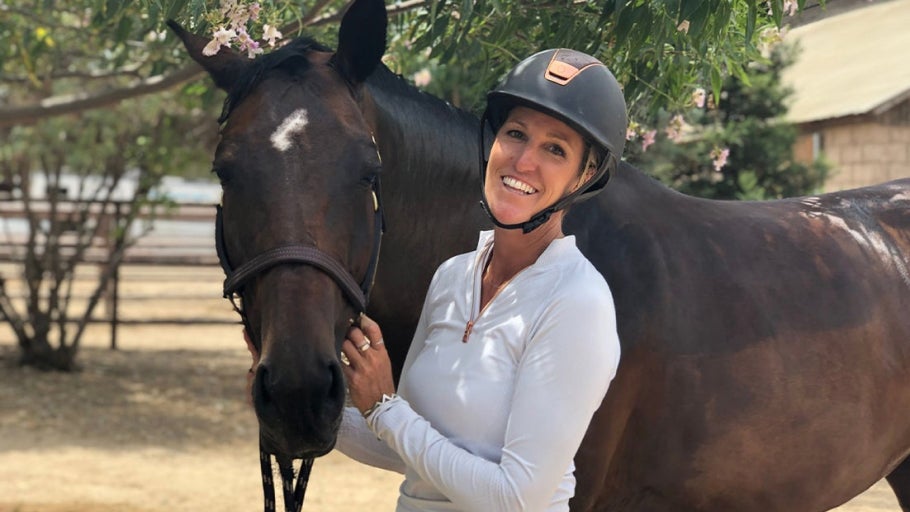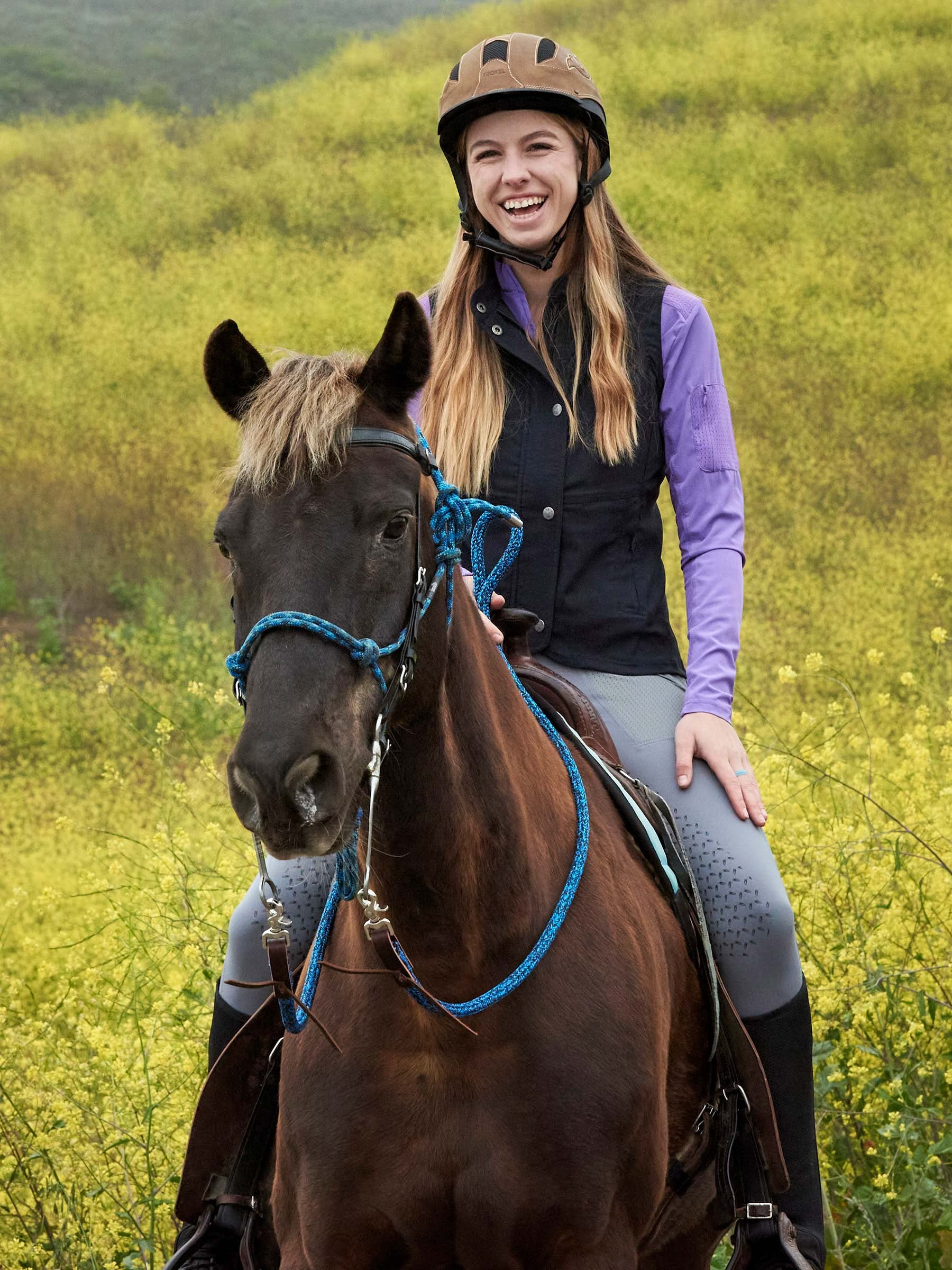
Horse Jumping Exercises for Straightness
Renowned Three-Day Eventer Stephen Bradley has had great success as an event rider, from winning the prestigious Burghley and Kentucky Three-Day events to being placed on the U.S. Olympic and World Equestrian Games teams. Stephen now travels the country to spread his wealth of knowledge through lessons and clinics, helping riders and horses alike reach their full potential. Read on to learn two exercises from Stephen that help develop one of the most important fundamentals of jumping: straightness.
The Training Pyramid
I'm a big believer in the basics. Whether you're just starting out or you're an experienced competitor, I think every rider needs to revisit the training pyramid from time to time. There's a reason why most professionals have this scale memorized!
One thing I like to point out to my students is that the training scale needs to be kept realistic for the horse and rider combination. For example, the rhythm that I would expect from my advanced horses is vastly different from the rhythm that I would expect from a young horse just started under saddle or a Thoroughbred right off the race track. Regardless of the horse's level, I'm still looking for a mastery of rhythm that is commensurate with where they are in their training. The same principle can be applied to every step of the pyramid all the way up to collection.
For the purpose of these pro-tips, I want to focus on straightness and how you can work on it while jumping.
If you've ever ridden in a clinic with me, you've probably heard me talk about jumping on the balance beam. To put it plainly, when you are jumping through a line of fences, you want to imagine that your horse is on a balance beam. If you're like me and you've watched a lot of the Olympics, you probably know that a balance beam is only 4" wide. Now, do I expect your horse to keep their footfalls within a 4" space? No. Do I expect you to get close? Yes.
So, how do you work on this?
Balance Beam Exercise: Part One
One of my favorite ways to influence a horse's straightness while also helping the rider become more aware of their path of travel is to set up a series of guide rails on the ground before and after a few jumps.
To start, the guide rails should be a solid 9 feet apart. Especially for horses that aren't used to this, seeing these guide rails can be a little surprising, and we do not want our horses stepping on the rails, hence why I leave them a little wide to start.
If you have a helper on the ground, ask this person to tell you just how close you are to the guide rails on either side. This will help you understand if your perceived path is your actual path. The goal here is to get those two things to match up.
After you've mastered the exercise with the guide rails set at 9 feet apart, then you increase the challenge by bringing the guide rails in a little so your margin for error is narrower. And if you really want to increase the challenge, you can replace the guide rails with cones or even tennis balls on the ground. What I like about using cones or tennis balls is that it puts the straightness responsibility solely on the rider. While a horse might redirect their path for the guide rails, the cones or tennis balls aren't going to have the same effect.
Try to keep this fun and don't be too hard on yourself if you make a mistake. The nice part about this exercise is that you can practice it over jumps of any height, even cavaletti or ground poles. This allows you to practice your skills as a rider without taxing your horse's legs unnecessarily.
Balance Beam Exercise: Part Two
In this exercise, I have set out four trot poles for each rider to trot through, focusing on straightness. Next, I have them jump a fence set several canter strides in front of the trot poles, to ask the riders to maintain straightness before, during, and after the jump, then slow down and maintain straightness through the trot poles. Lastly, I made the set of trot poles into another jump, to ask the riders to maintain straightness before, during, and after both jumps in the line.
For this exercise, a big part of the equation is being able to keep your horse straight. You want to come in straight, being able to see the corner of your horse's eyes. In the air, you want to see the corner of each eye. On landing, you want to see the corner of each eye, every stride down to the next fence.
The idea of being able to see the corner of each eye allows us to act as a chiropractor lining up the back, which starts at the poll and goes all the way to the tail. Nine times out of ten, if you can see the corner of each eye, the hind feet will land in the same tracks as the front feet. This idea of straightness improves the jump, the scope of the jump, and improves the balance.
Closing Thoughts
We hope you enjoyed these exercises from Stephen Bradley to help you improve straightness through your rides. With practice, you and your horse can be traveling as straight as if you were on a gymnast's balance beam in no time! As with all exercises, we suggest consulting your trainer before attempting them by yourself.
For more exercises, tips, and tricks, be sure to check out our other related articles below! For additional insight from Stephen, we invite you to also check out his advice on choosing a young event horse. As always, should you have any questions, our customer service team is happy to help and may be reached at info@ridingwarehouse.com or 1-800-620-9145. Happy schooling!
Related Articles






